On Friday morning, the topic “TrumpIsDone” trended on Twitter. It reminded me that there are two types of Never Trumpers.
Those who spend their lives waging rhetorical war on Donald Trump on social media will delight in the idea of him being “done,” the same way infantry would at a rumor that the enemy is close to collapse. It’s a shot of morale in the thick of battle.
The second type will shudder at the thought of how many times we’ve heard this before, only to have him come roaring back. He was done after the Access Hollywood tape, done after Robert Mueller was tapped to investigate him, done after the pandemic, done after January 6, done after the GOP blew the 2022 midterms, done after Ron DeSantis challenged him in the primary, and done after he was criminally indicted.
For the second type of Never Trumper, this isn’t battle. It’s a Friday the 13th movie. No matter how many times you think you’ve finished off Jason, he’s always right behind you with a machete.
Guess which of the two types I am.
The triumphalism over Kamala Harris’ polling surge has given me flashbacks lately to a specific moment of hubris when practically everyone assumed Trump was done and practically everyone was wrong. As desperately as Democrats want to believe it’s 2008 all over again—and I do mean desperately—it feels more like 2016 to me.
The news yesterday that Corey Lewandowski will join Donald Trump’s campaign seemed like karmic confirmation of my thesis. Lewandowski managed Trump’s 2016 campaign until Republican demands for a more polished effort from their new nominee led to his replacement by Paul Manafort. He’s a loose (very loose) cannon whom Trump seems to value not for his professionalism but for his lack thereof.
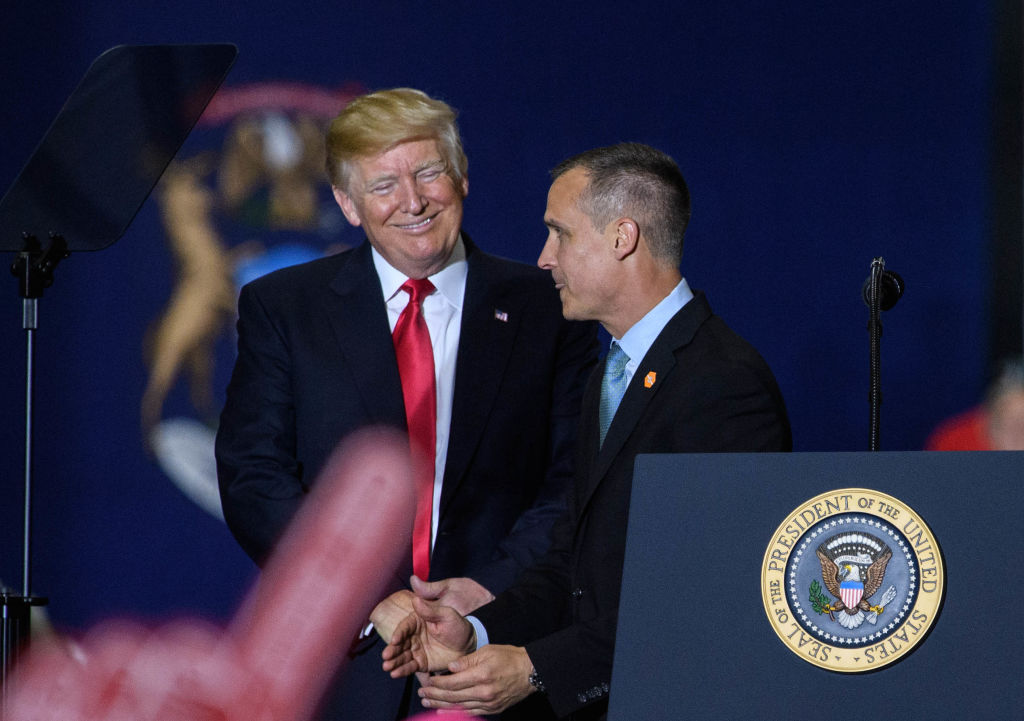
Lewandowski is essentially an enabler of Trump’s id, a “warm blanket” who’ll reassure the boss that his instincts are right and his highly paid advisers are wrong. From the earliest days of MAGA, Corey’s mantra has been “Let Trump be Trump.” That was the title of his 2016 campaign memoir and also appears to be his strategy, such as it is, for how this year’s operation should go forward.
With Trump down in the polls, Corey back on the team, and Democrats trying to hold the White House without the sitting president at the top of the ballot, there’s suddenly something very familiar about this campaign. And not in a good way.
2016 all over again.
Start with the obvious. Now, as in 2016, Democrats have a candidate who won the nomination because it was “her turn,” not because she offered a compelling vision for the country.
In both cases, coincidentally, Joe Biden was elbowed aside to make way for her.
In both cases, policy was largely an afterthought in the nominee’s campaign. Hillary Clinton’s core argument was that it was past time for America to have a woman president. Kamala Harris’ core argument (so far) is that we need to “bring back joy” after a very gloomy era and defeat the weirdos on the other side.
The Democratic Party’s haste to clear the field for each of them meant that neither faced a formidable challenger for the nomination—although Bernie Sanders’ challenge to Clinton in 2016 became formidable due to her unpopularity. What was supposed to be token socialist opposition, a protest vote for disaffected progressives, became something more when pitted against the dismal prospect of President Hillary.
Clinton and Harris both ended up with suburban-dad-ish running mates—named Tim!—who could, in theory, connect with average Americans where the nominee herself might have trouble doing so. And both had an opportunity to reach out to center-right Republicans who were repelled by Trump which they undertook to squander. Clinton maneuvered to Barack Obama’s left on the hot topic of immigration during the 2016 campaign; Harris has launched her economic agenda in this year’s cycle by touting price controls and housing subsidies.
Oh, and in both cases, Democrats were overconfident about their candidate’s chances.
With Clinton, they were wildly so. With Harris, it’s milder—and somewhat understandable. Having spent the first half of this year despairing that Biden was doomed, the party can be forgiven for treating its new nominee’s strength as world-beating. (TrumpIsDone!) But the truth is that Harris still trails him in most battlegrounds and enjoys only a small lead in national surveys that’s insufficient to win given the Electoral College’s current bias toward the GOP.
As I write this, in fact, with America supposedly in the throes of Kamala-mentum and Trump at his nadir, a new poll of must-win Pennsylvania has him winning the state by a point. Trump is not “done.”
Even so, he too seems to be reverting to his 2016 form after a long spell as a somewhat more disciplined candidate.
Until the Democratic switcheroo last month, Trump had managed to play a reasonably effective “prevent” defense to maintain the durable lead he’d built over Joe Biden. He wasn’t on the trail much, depriving voters of reminders of why they dislike him. He confined most of his nuttiest comments to Truth Social and populist media outlets, where no one but true believers would hear. He shrewdly dodged primary debates to deny Ron DeSantis and Nikki Haley an opportunity to target him. He kept quiet in July as Democrats sparred with each other over Joe Biden’s fate.
Under the tutelage of advisers Susie Wiles and Chris LaCivita, and buoyed by his unfamiliar status as frontrunner, he managed a degree of restraint—or what passes for “restraint” by his standards. Then Harris replaced Biden as nominee, the polls shifted, and Trump lost his mind.
You can see the gears turning in Trump’s head, egged on by populist admirers: “I’m losing because I’ve become too tame. I’m running the campaign LaCivita wants, not the one I want. I won in 2016 by trusting my instincts. I need to do that again.”
In less than a month, he went from being the favorite to win to becoming the underdog to a progressive woman, the same niche he occupied in 2016. Is it surprising that he’d revert instinctively to some of his same habits from that campaign, particularly given how it ended?
He’s bringing Corey back, along with several other populist bruisers as advisers. He’s getting sucked into personal attacks on his opponent and crowd-size comparisons and away from more substantive criticisms. (His staff is so desperate to keep him on message that they sent him to the podium on Thursday with a binder of talking points. It didn’t work.) He’s back on Twitter, however haltingly, where tens of millions will see his posts.
And he’s probably going to fire some advisers soon, just as he did eight years ago.
“No one thinks Lewandowski and LaCivita can cohabitate for long, leading some people close to Trump to speculate that he’s trying to push LaCivita out,” Puck’s Tara Palmeri reported on Thursday. LaCivita has spent the last few weeks as a populist scapegoat for Trump’s faltering candidacy, ostensibly because he (correctly) views the nationalist Project 2025 initiative as a liability but in reality because MAGA types need someone to blame for their man’s downturn.
LaCivita comes from the old, distrusted pre-Trump GOP. Lewandowski, Trump’s original campaign manager, has a sterling MAGA pedigree by comparison. You can see the gears turning in Trump’s head, egged on by populist admirers: I’m losing because I’ve become too tame. I’m running the campaign LaCivita wants, not the one I want. I won in 2016 by trusting my instincts. I need to do that again.
Let Trump be Trump.
Lewandowski will not only let Trump be Trump, he’ll encourage it. And in all probability, LaCivita will end up out in the cold: As Jonathan Last noted recently, Trump fired his campaign managers in the middle of each of his first two runs for president. In 2020, Brad Parscale got the boot; in 2016, Lewandowski and Manafort were each canned, ultimately replaced by Kellyanne Conway and populist wild man Steve Bannon.
If being lazy, stupid, and childish won Trump the White House in his first run, why wouldn’t he lean into it as the cure for what ails him in his third? He misses that 2016 campaign so much that he even did a short bit about Hillary’s emails during his press conference on Thursday at Bedminster.
All of which hopefully helps explain my case of Never Trump déjà vu. When I watch triumphalists hoot at his latest brain-damaged insult to military valor—oh boy, he’s really done it now!—I wonder if I hallucinated what he said about John McCain or his history of draft-dodging or his “personal Vietnam” of trying to avoid venereal disease, never mind the comments about “suckers” in uniform that emerged years later.
None of it stopped him from winning in 2016. Why would it stop him now, when he’s polling better than he did in either of his first two runs for president?
What have you seen in the character of this country over the last nine years to make you think he could do anything that would render him “done,” up to and including putting Corey Lewandowski in charge of it?
The difference between then and now.
Actually, there are reasons to believe This Time Is Different. Or so I need to tell myself in order to cope with the next 80 days.
Trump’s great advantage in 2016 was his promise of radical change relative to the Bush and Clinton dynasties. It’s always helpful to run as an “outsider,” but it’s really helpful when the alternative is two families that dominated American politics for most of the previous 30 years. Hillary, the ultimate establishmentarian, was the ideal opponent for him.
Harris is not. Despite being the sitting vice president, she’s the closest thing to a “change candidate” in the race this year. Trump’s turn toward Corey Lewandowski and his demagogic id is an obvious attempt to recapture his “change” cred as the populist outsider who took America by storm in 2016, but that’s a hard sell for a man who’s already been president and who dominates his own party’s establishment like no one else in modern American history.
Harris and Clinton are also poles apart with respect to the enthusiasm for them within their own party. That’s partly circumstantial: Had Hillary replaced an ailing president as nominee in July when all hope of victory seemed lost, she too might have drawn rapturous audiences desperate for a savior. But Harris has shown some real retail political chops in her events so far and routinely projects an attitude of giddy excitement that Clinton never approached. The comparisons to Obama are overbaked, but she’s closer to that energy than Hillary ever was.
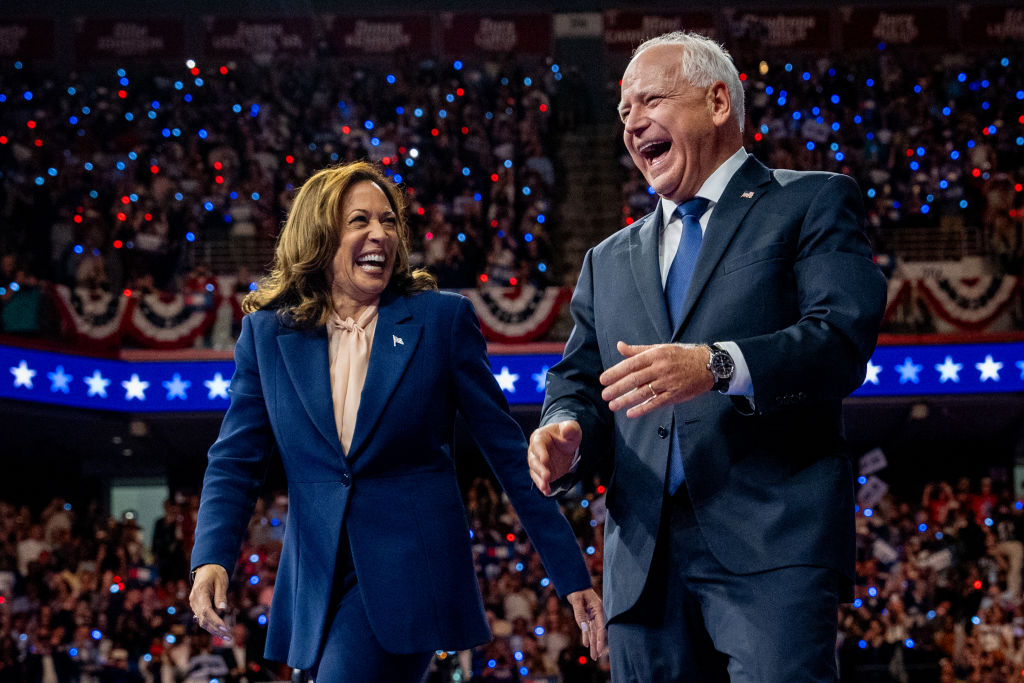
Interestingly, Harris also isn’t emulating Clinton’s habit of reminding voters that she’d be the first woman president. Hillary mentioned it repeatedly in 2016, even holding her Election Night event under a literal “glass ceiling” at the Javits Center. Framing a contest to be commander-in-chief of the military as a referendum on feminism was unwise in hindsight, especially when the alternative was a macho authoritarian who reveled in dominating his enemies.
Harris has stayed away from identity politics to this point. Such critiques will follow her anyway to some degree, but perhaps less than they would if she used Clinton’s tactics.
Trump is also different now in important ways than he was in 2016, albeit not nearly as much as most of us would like.
If the thought of four years of Hillary was exhausting for average Americans back then, imagine how exhausting four more years of the Trump show must seem to them today. Now in his third consecutive campaign for the presidency, he’s become his own dynasty—one even drearier in its own way than the Bush and Clinton versions. “During the last hour of his convention speech, and every day since then, Mr. Trump has offered words and actions that remind Americans why they voted him out of office in 2020,” Democratic strategist Doug Sosnik wrote in an op-ed on Friday.
You don’t need highfalutin Dispatch reasoning about saving the Constitution to justify withholding your vote from him this year. You just need to be tired of hearing his voice.
Or of coup attempts. Either way.
Trump is also eight years older now than he was then, which mattered a little a month ago and might matter a lot by November. A Marquette Law School poll conducted in May found 53 percent of voters thought Trump was too old to be president, far less than the 78 percent who said so of Joe Biden. The latest poll finds Trump’s number ticking up to 58 percent versus just 11 percent who say so of Harris. The contrast with his new opponent is hurting him, particularly after Americans got a hard look during the first debate at what an 81-year-old president—which Trump would be in 2027 if he wins—looks like in action.
There’s also reason to believe that the days of Trump meaningfully overperforming his polls are over.
The final RealClearPolitics national average in 2016 had him at 43.6 percent. He ended up winning 46.1 percent of the national popular vote, just enough to get him over the line in battleground states. History nearly repeated in 2020 when the average put him at 44 percent and he ended up with 46.9.
Those of us who are stuck in a Friday the 13th movie look at that and assume he’s destined to beat expectations again by 2 or 3 points. But those who need a shot of morale will look at it and conclude that 47 percent is his absolute ceiling, especially as his shtick grows ever more wearisome. Even against a badly diminished Biden, he spent most of this year hovering in the 46-47 percent range. With Harris as his opponent, he currently stands at—you guessed it—46.9 percent.
Even his move toward Lewandowski isn’t as much of a 2016 reprise as it might seem. Trump’s staff got gradually more professional in that race over time, from Corey to Manafort to Conway. If Trump ends up replacing Wiles and LaCivita with Lewandowski, he’ll have gotten considerably less professional—with unpredictable consequences for an organization that already doesn’t have its priorities entirely straight.
It reminds me of how Trump insisted on turning to Sidney Powell and Rudy Giuliani after the 2020 election when he had smart lawyers like Pat Cipollone available to him. He demands to be told what he wants to hear when he’s stressed, even when it’s not good for him. Or for us.
Letting Trump be Trump never ends well for anyone, although it tends to end worse for him than for his enemies.
Maybe it’ll end well for him this time. Trump has made real gains since 2016 with nonwhite working-class voters, after all, forcing Harris to find those votes somewhere else. His advantage with men in battleground states is also on pace to exceed his margins in each of his first two runs for presidents, which will put pressure on her to run up the score with women to a historic degree. And as exhausting as his daily nonsense is, it’s also considerably more normalized today—especially to younger voters who don’t know better—than it was eight years ago. Nothing that will happen between now and November 5 will assure that he’s “done” among an electorate that’s grown tragically numb to his antics. Not even a prison sentence, I suspect.
But that’s too much of a downer on which to end a Friday post so I’ll leave you with a note of optimism instead: Every slasher-movie franchise eventually ends. Like Jason, Trump can’t go on forever. I think.

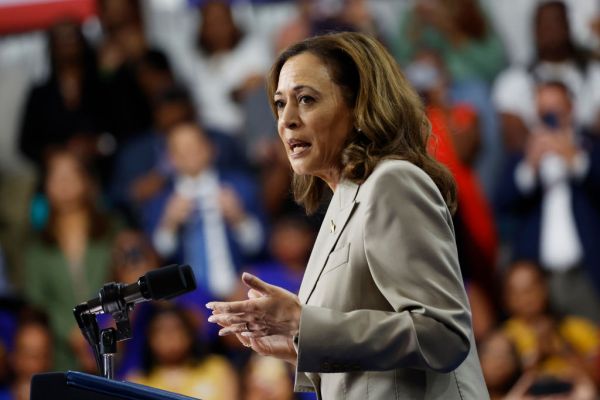
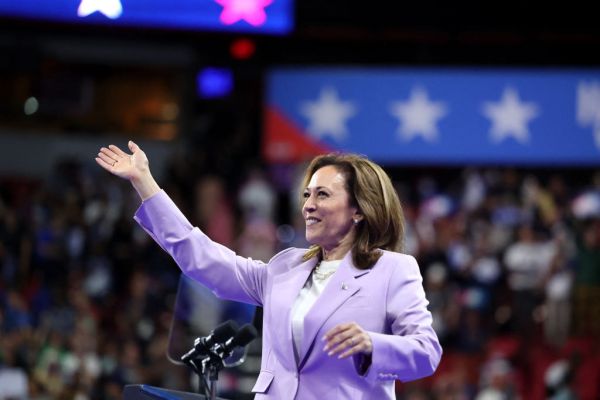
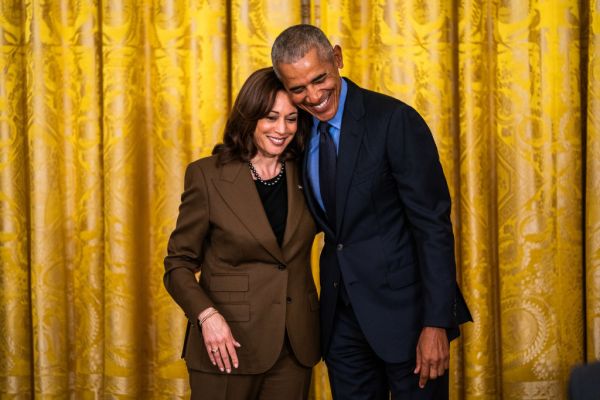
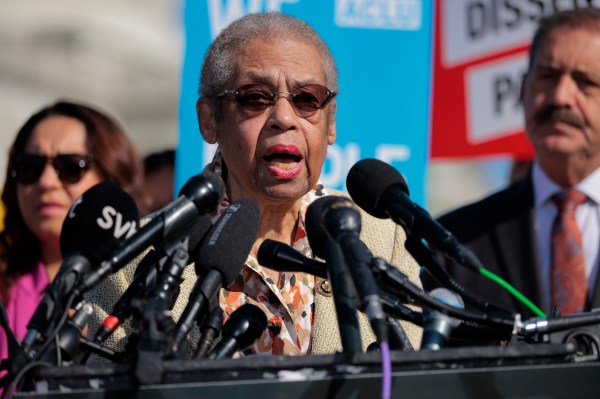
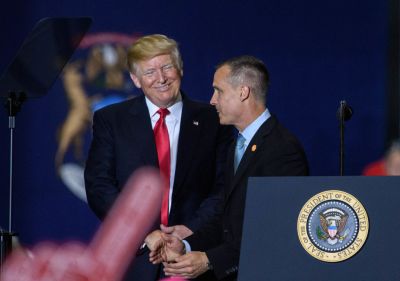
Please note that we at The Dispatch hold ourselves, our work, and our commenters to a higher standard than other places on the internet. We welcome comments that foster genuine debate or discussion—including comments critical of us or our work—but responses that include ad hominem attacks on fellow Dispatch members or are intended to stoke fear and anger may be moderated.
With your membership, you only have the ability to comment on The Morning Dispatch articles. Consider upgrading to join the conversation everywhere.